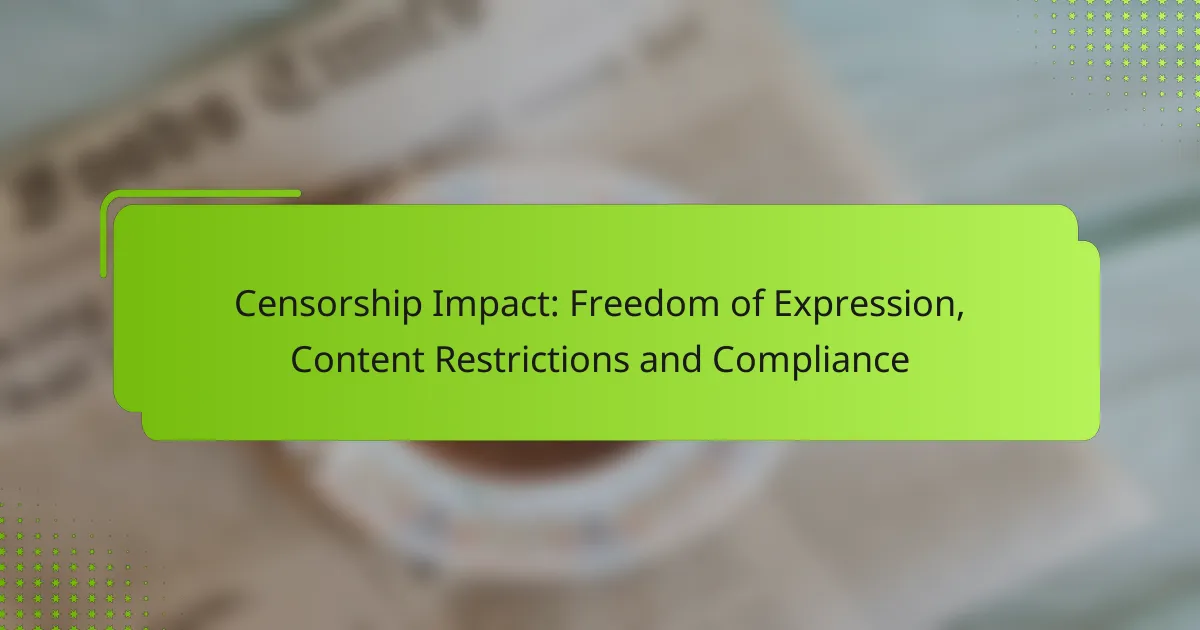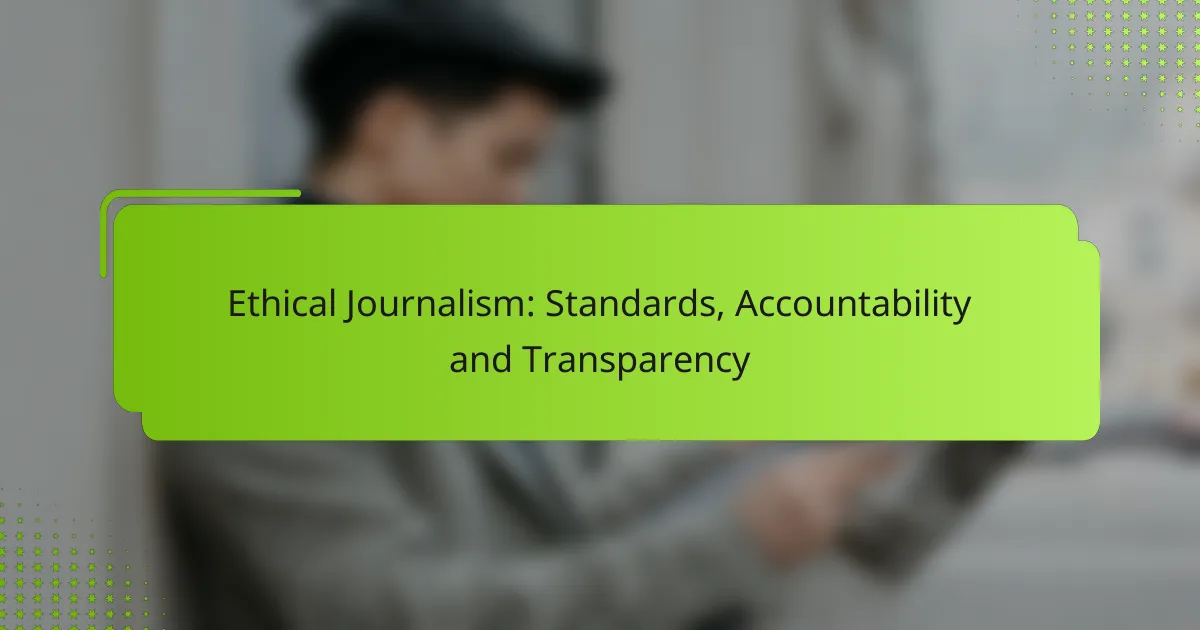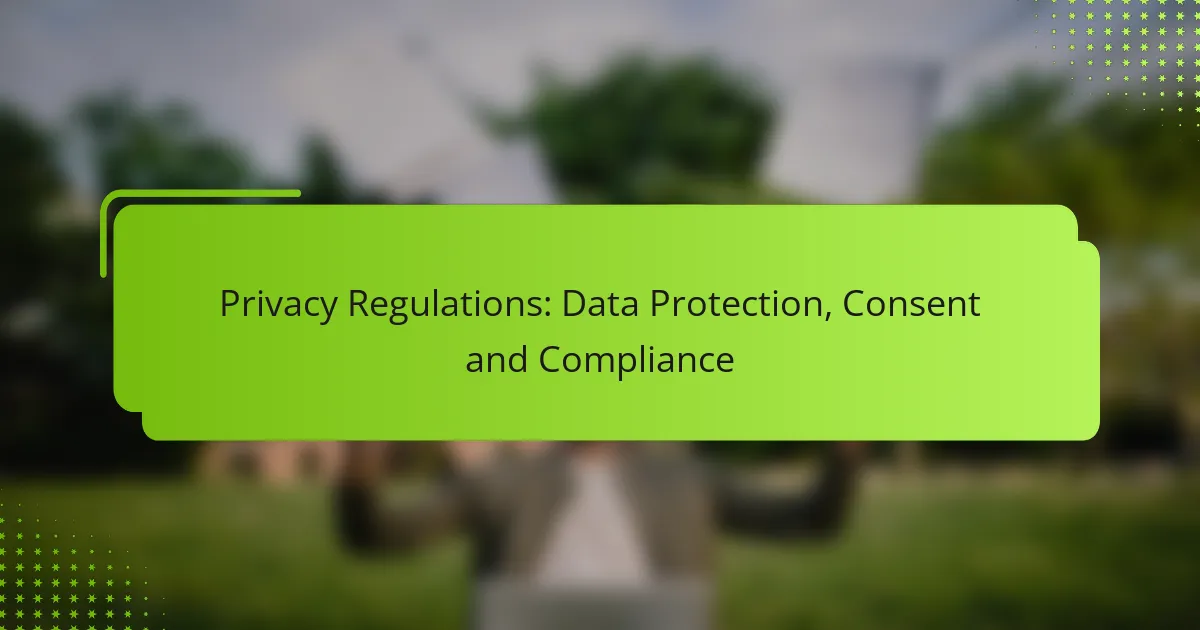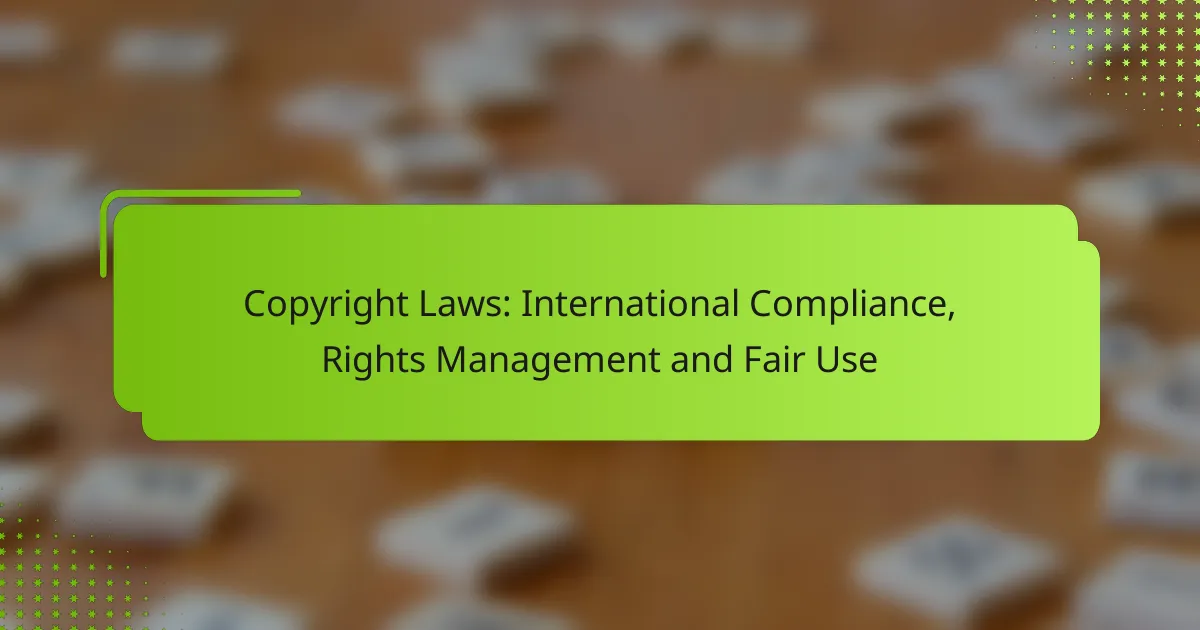Censorship plays a crucial role in shaping freedom of expression, as it often restricts the flow of ideas and information in society. This limitation can lead to self-censorship, diminishing public discourse and debate. Additionally, social media platforms enforce content restrictions to uphold community standards and comply with legal requirements, which can further complicate the landscape of expression. Understanding and navigating these regulations is essential for individuals to ensure their content aligns with local laws while still engaging in meaningful dialogue.
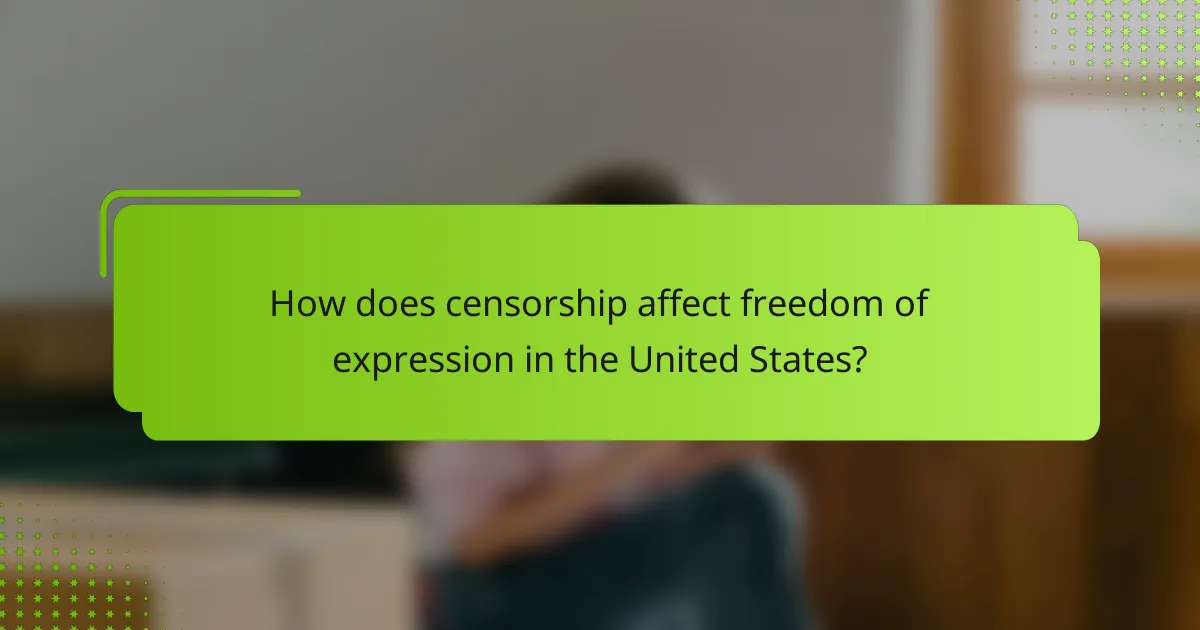
How does censorship affect freedom of expression in the United States?
Censorship in the United States significantly impacts freedom of expression by restricting the dissemination of ideas and information. It can limit individual voices and create an environment where self-censorship becomes common, ultimately stifling public debate and discourse.
Legal frameworks limiting speech
In the U.S., various legal frameworks govern speech, including the First Amendment, which protects freedom of expression but also allows for certain restrictions. Laws against hate speech, obscenity, and incitement to violence create boundaries that can lead to censorship. Additionally, state and federal regulations may impose content restrictions on specific platforms or media.
Understanding these legal frameworks is crucial for individuals and organizations to navigate the complexities of free speech. Compliance with these laws can prevent legal repercussions, but it may also lead to the suppression of legitimate discourse.
Impact on public discourse
Censorship can distort public discourse by creating echo chambers where only certain viewpoints are heard. This can lead to a homogenization of ideas, diminishing the diversity of thought essential for a healthy democracy. When individuals fear repercussions for expressing dissenting opinions, they may choose to remain silent, further limiting the exchange of ideas.
Moreover, the impact of censorship can extend to social media platforms, where algorithms and community guidelines may inadvertently suppress certain topics or viewpoints. This can skew public perception and hinder informed decision-making among citizens.
Case studies of censorship
Several notable case studies illustrate the effects of censorship on freedom of expression in the U.S. For instance, the banning of books in schools often sparks debates about educational content and the rights of students to access diverse materials. These actions can lead to significant pushback from communities advocating for intellectual freedom.
Another example is the removal of certain content from social media platforms, where companies may censor posts that violate their policies. This raises questions about the balance between maintaining community standards and protecting free speech rights. Each case highlights the ongoing tension between regulation and expression in the digital age.
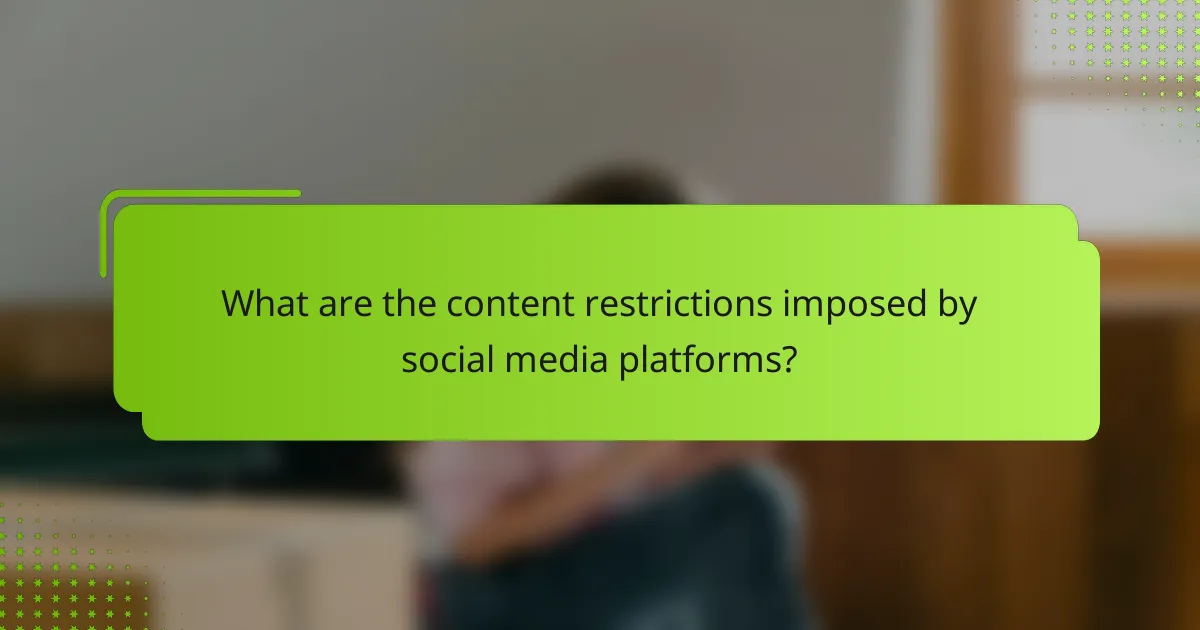
What are the content restrictions imposed by social media platforms?
Social media platforms impose various content restrictions to maintain community standards, ensure user safety, and comply with legal regulations. These restrictions often include prohibitions on hate speech, misinformation, graphic content, and copyright violations.
Facebook’s community standards
Facebook’s community standards outline what content is acceptable on the platform, focusing on safety, privacy, and authenticity. Users are prohibited from posting hate speech, threats, or any content that promotes violence or self-harm. Additionally, misinformation related to elections and health can lead to content removal or account suspension.
To navigate these standards effectively, users should familiarize themselves with Facebook’s guidelines and avoid sharing unverified information. Regularly reviewing updates to these standards can help prevent accidental violations.
Twitter’s content moderation policies
Twitter’s content moderation policies emphasize the importance of free expression while also addressing harmful behavior. Users are restricted from posting abusive content, engaging in harassment, or spreading misinformation, particularly during crises or elections. Violations can result in tweet removal or account suspension.
To stay compliant, users should think critically before posting and consider the potential impact of their tweets. Utilizing Twitter’s reporting tools can help maintain a safer environment for all users.
YouTube’s copyright enforcement
YouTube enforces strict copyright policies to protect creators’ intellectual property. Users must ensure that any content they upload does not infringe on copyrights, which includes music, videos, and images. Violations can lead to content removal, strikes against the account, or even termination of the channel.
To avoid copyright issues, creators should use original content or obtain proper licenses for any third-party material. YouTube’s Content ID system can help identify copyrighted material, allowing users to address potential issues proactively.
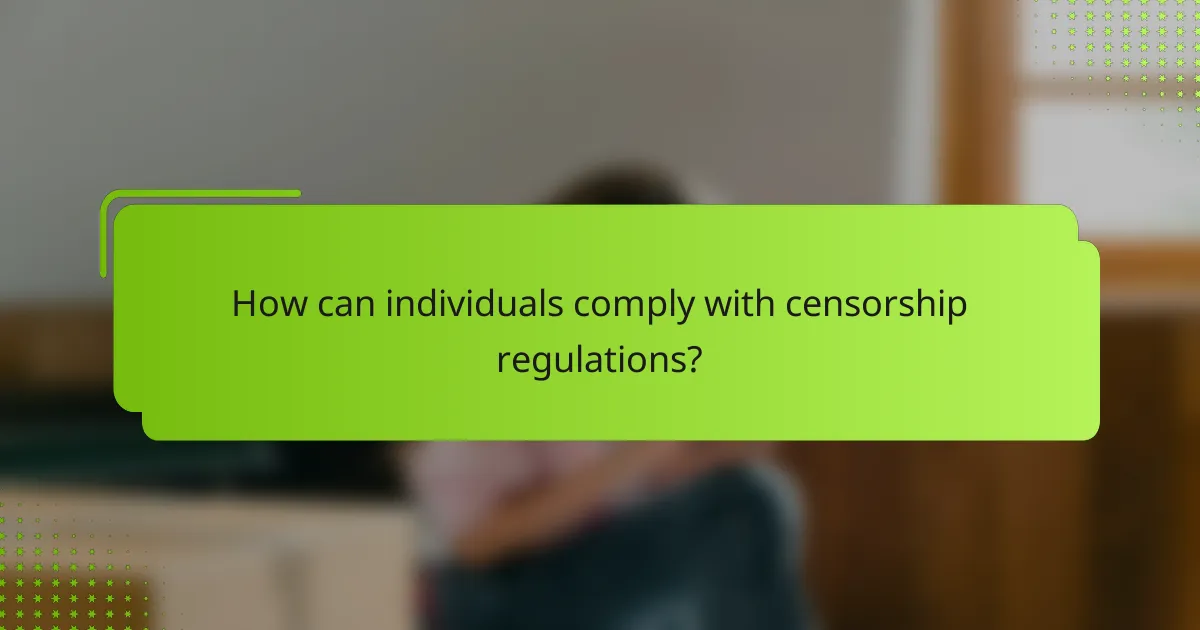
How can individuals comply with censorship regulations?
Individuals can comply with censorship regulations by understanding the specific laws that apply in their region and adapting their content accordingly. This often involves being aware of prohibited topics and ensuring that any published material aligns with local guidelines.
Understanding local laws
Familiarizing yourself with local laws is crucial for compliance with censorship regulations. Each country has its own set of rules regarding what content is acceptable, ranging from restrictions on political speech to limitations on explicit material. For example, in some countries, discussing certain political issues may lead to severe penalties.
To stay informed, regularly check government websites or legal resources that outline current laws. Engaging with local advocacy groups can also provide insights into any changes in regulations or emerging trends in censorship.
Best practices for content creators
Content creators should adopt best practices to navigate censorship effectively. First, always verify the accuracy of your information and ensure it adheres to local standards. Avoid topics that are known to be sensitive or controversial in your region to minimize risks.
Additionally, consider using disclaimers or content warnings when discussing potentially sensitive subjects. This can help prepare your audience and demonstrate awareness of local sensitivities. Lastly, maintain a flexible approach by being ready to adapt your content strategy based on feedback and regulatory changes.
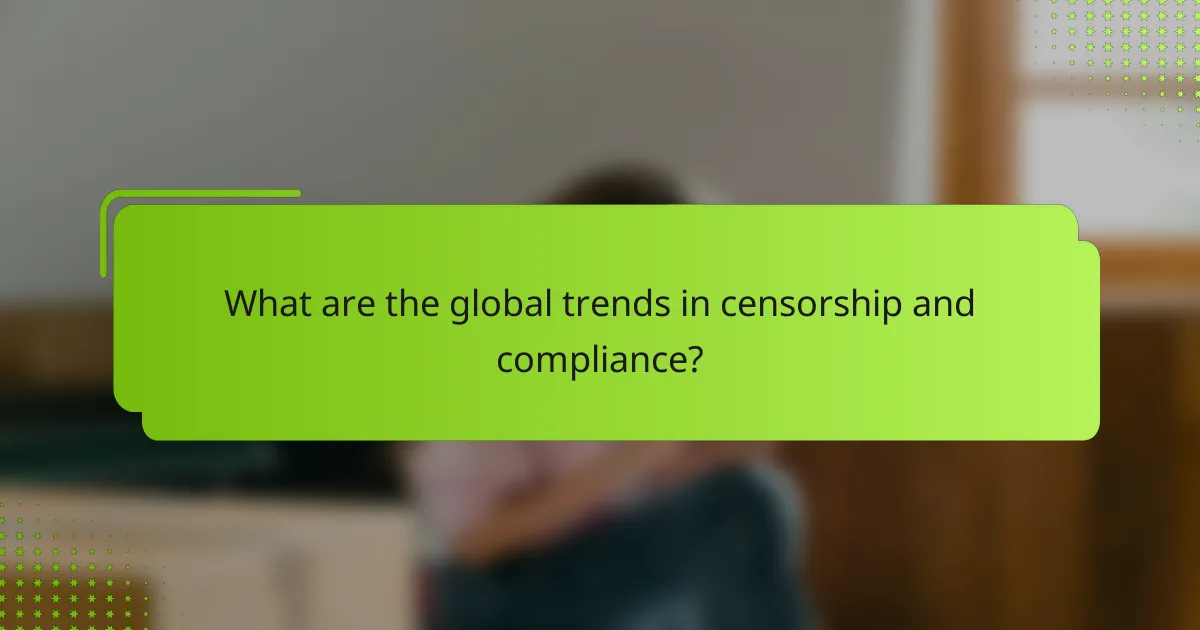
What are the global trends in censorship and compliance?
Global trends in censorship and compliance indicate a growing emphasis on regulating online content, often justified by national security, public order, or moral standards. Countries are increasingly implementing stricter laws and technologies to monitor and control digital expression, leading to significant implications for freedom of speech.
Comparative analysis of countries
Censorship practices vary widely across the globe, with countries like China and North Korea employing extensive state control over information, while nations such as Canada and Germany uphold stronger protections for free expression. In many democratic nations, there is a balance between protecting free speech and enforcing laws against hate speech or misinformation.
For example, in the European Union, the Digital Services Act imposes obligations on platforms to combat illegal content, reflecting a trend towards accountability. In contrast, countries with authoritarian regimes often prioritize state interests over individual rights, leading to harsher penalties for dissenting voices.
Emerging technologies in content monitoring
Emerging technologies are playing a crucial role in content monitoring, with artificial intelligence and machine learning being deployed to detect and filter harmful content. These technologies can analyze vast amounts of data quickly, but they also raise concerns about accuracy and bias, potentially leading to the suppression of legitimate expression.
Platforms are increasingly using automated systems to comply with regulations, which can result in over-censorship or the removal of content that does not violate any laws. Stakeholders must consider the trade-offs between effective monitoring and the preservation of free speech, ensuring that compliance measures do not infringe on individual rights.

What are the implications of censorship for advertisers?
Censorship significantly impacts advertisers by limiting the platforms and content available for their messages, which can lead to reduced reach and effectiveness. Advertisers must navigate these restrictions carefully to ensure compliance while still engaging their target audiences.
Ad placement challenges
Censorship can create substantial challenges for ad placement, as certain platforms may restrict specific types of content or messages. Advertisers need to stay informed about the regulations governing their industry to avoid penalties and ensure their ads are placed in compliant environments.
For instance, in regions with strict advertising laws, such as the European Union, brands must adhere to guidelines that may limit the promotion of certain products like alcohol or pharmaceuticals. This can restrict where and how ads can be displayed, necessitating alternative strategies or platforms.
Brand reputation risks
Censorship can pose risks to brand reputation, particularly if an advertisement inadvertently violates local regulations or cultural norms. Negative publicity from censorship-related incidents can damage consumer trust and loyalty, leading to long-term consequences for a brand.
Advertisers should conduct thorough research on the cultural and legal landscape of their target markets. Engaging local experts or using market research tools can help identify potential pitfalls and ensure that advertising strategies align with community values and expectations.

How can advocacy groups combat censorship?
Advocacy groups can effectively combat censorship by employing a combination of awareness-raising strategies and legal support initiatives. These approaches help to inform the public, influence policy, and provide necessary resources to those affected by content restrictions.
Strategies for raising awareness
Raising awareness about censorship involves educating the public on its implications for freedom of expression. Advocacy groups can utilize social media campaigns, public demonstrations, and informational workshops to highlight the importance of open dialogue and the dangers of restrictive policies.
Collaborating with artists, writers, and influencers can amplify the message, reaching a broader audience. For instance, hosting events that showcase censored works can draw attention to the issue and foster community support.
Legal support initiatives
Legal support initiatives are crucial for helping individuals and organizations navigate the complexities of censorship laws. Advocacy groups can offer legal advice, representation, and resources to those facing content restrictions, ensuring their rights are protected.
Establishing partnerships with law firms or legal experts can enhance these efforts. Additionally, creating a database of legal resources and precedents can empower individuals to understand their rights and take informed action against censorship.
